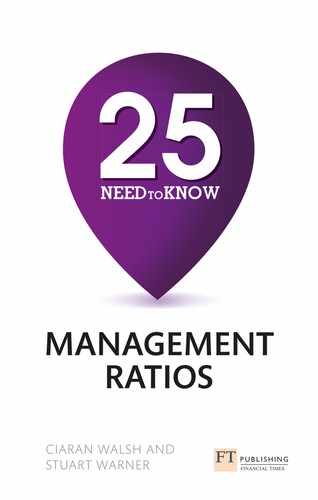10
The cash flow statement
This chapter reviews:
- Cash versus profit
- The cash flow statement
For purposes of completeness we have included a chapter on the cash flow statement. This statement is used more externally than internally to analyse a business.
The cash flow statement completes a company’s set of published accounts. Its purpose is to track the flow of funds through the company. It identifies where cash has gone to and where it has come from and it is a very powerful tool for explaining movements in the various liquidity ratios.
Cash versus profit
The rules relating to cash flow are very simple. Every time a company pays out cash, writes a cheque or makes a bank transfer, a cash outflow occurs. When cash, a cheque or a bank transfer is received, there is a cash inflow. This is the only rule, and its very simplicity means that it is difficult to find mechanisms to hide unpleasant truths about a company’s affairs.
Many operating cash movements do not appear in the profit and loss account. One reason is that the profit and loss account uses the accruals concept to adjust a company’s cash flows to bring them into line with revenue earned and costs incurred for a specific period. While it is most important that true revenue and costs are identified, these adjustments sometimes hide important aspects of a company’s affairs.
There are those who would contend that the cash flow statement is more reliable and less subject to manipulation than the profit and loss account.
However, despite its clarity, it cannot, as is occasionally suggested, replace the profit and loss account. The profit and loss account correctly distinguishes between cash paid for electricity consumed in the last month and cash paid for a building that will be occupied by the company for the next 20 years.
The format of the cash flow statement
The cash flow statement has historically been presented in many formats and is now relatively standardised across accounting jurisdictions.
The purpose of the cash flow statement is to reconcile opening and closing cash balances.
The statement presents this reconciliation under the following headings:
- operating activities
- servicing of finance and taxation
- investing activities
- financing activities.
Figure 10.1 identifies the main headings in a cash flow statement but omits much of the detail in the interest of clarity.
Operating activities
An important number in the cash flow statement is the ‘net cash inflow (or outflow) from operating activities’ within the first section on operating activities.
It is interesting to compare this to a business’s operating profit (or EBIT). A healthy operating profit does not always equate to a healthy cash flow from operating activities. In the long run, for a stable business, there should be a correlation between cash and profit; however, in the short term there can be differences. These differences are highlighted here.
There will be a supporting note to this section of the cash flow statement which reconciles the operating profit to the cash flow from operations. This will account for movements in working capital as well as any non-cash items such as depreciation.
Servicing of finance and taxation
This section of the cash flow statement shows:
- interest paid
- tax paid
- dividends paid.
It shows the outflows required to satisfy the funders of the business as well as the tax authorities.
For some businesses there may also be interest receipts and dividend receipts from various investments shown under this heading.
Investing activities
This section of the cash flow statement shows the purchase and sale of assets. This can include fixed assets, such as new buildings, as well as investments in other businesses.
It is useful to see if a business is investing in its future. Business growth should be supported by investment in new long-term assets.
Financing activities
This section of the cash flow statement focuses on any changes in business funding. New equity issues or the refinancing of debt will be shown here.
Essentially the financial statements should tell a story of what is happening to a business. Any changes in financing should be supported by changes elsewhere in the business.
For example, a business may have raised a new loan to pay for a new factory to meet growing demand. This is positive news and should result in higher profits in future years.
The terminology from the cash flow statement is widely used in boardrooms and management meetings. It is important that managers be familiar with this terminology and appreciate the significance of the various components of cash flow.

